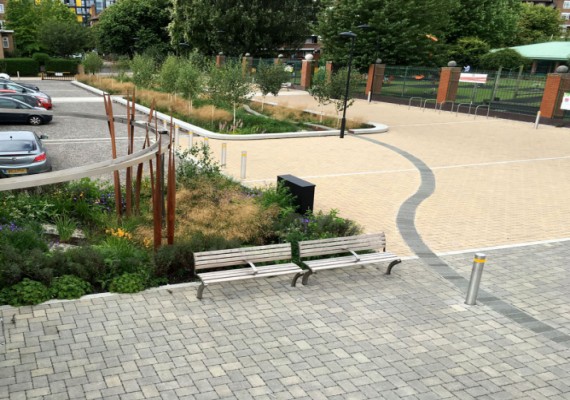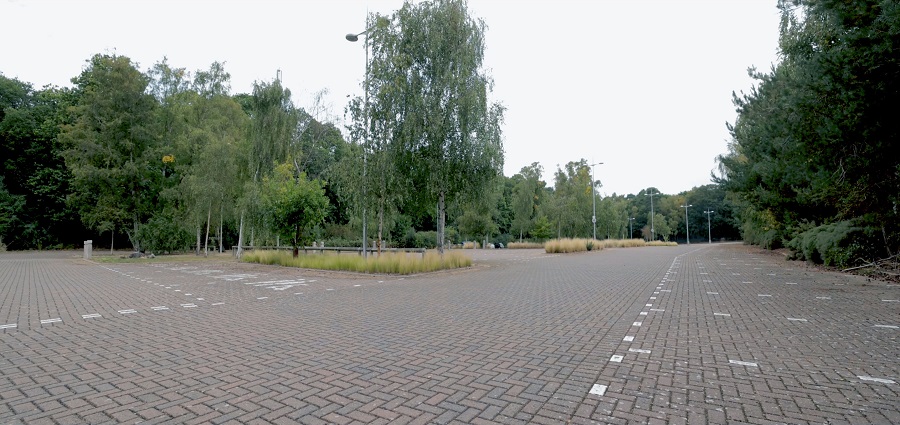
New Government requirements for SuDS on developments in England came into force on April 6 and are being implemented through the planning system.
Although the planning system’s ability to actually deliver mainstream use of SuDS is questionable, Interpave welcomes the move towards a design-led approach, developing multi-functional SuDS integrated with urban design.
The DCLG ministerial statement first issued in December 2014 now sits alongside the National Planning Policy Framework (NPPF) as an additional policy, spelling out “the Government’s expectation … that sustainable drainage systems will be provided in new developments wherever this is appropriate”. The new measures must be applied by local planning authorities (LPAs) through local policies and plans, as well as planning application decisions on ‘major developments’ of 10 or more dwellings and equivalent non-residential or mixed developments. However, this situation might change as the Government intends to “keep this under review, and consider the need to make adjustments where necessary”.
Meanwhile, existing NPPF prioritisation of SuDS in areas of flood risk and requirements that developments should not make flood risk worse elsewhere – often by utilising SuDS – still apply to developments of any scale. Also, permitted development rights for new or replacement hard surfaces, such as drives and car parks, around homes and non-domestic premises still only apply where permeable paving or similar solutions are used.
Under the new arrangements, from mid-April ‘Lead Local Flood Authorities’ (at county or unitary level) will become statutory consultees on surface water management for planning applications. LPAs must satisfy themselves of minimum operational standards and ensure that maintenance is provided for the lifetime of the development using planning conditions or other obligations such as Section 106 agreements. SuDS designs must also be ‘economically proportionate’ in terms of operation and maintenance.
New Government guidance, in the form of ‘Non-statutory Technical Standards for SuDS’, was published in March, albeit with a minimal level of information. It is still unclear whether Defra’s far more extensive, final (June 2014) ‘Draft National Standards for SuDS’ and its related guidance will be formalised, or other information added to the NPPF Planning Practice Guidance in the near future.
However, guidance for LPAs, developers and designers, on various aspects of SuDS is already available from a number of sources, including ‘The SuDS Manual’, due to be re-published this summer, and the 2013 Code of Practice BS8582. The Code seeks to integrate SuDS with urban design in delivering amenity and community value as well as enhancing landscape and townscape character, and stresses the importance of linking surface water management and development planning.
Similarly, the June 2014 Draft National Standards Guidance stipulates that SuDS: “must consider requirements for urban design that may be specified by the Local Planning Authority, particularly in relation to landscape, visual impacts, aesthetics, biodiversity and amenity”. It also recommends that SuDS: “should aim to manage surface water within sub-catchments, close to source and at or near surface as reasonably practicable” – something that concrete block permeable paving is well-suited to as a source control feature.
It is expected that LPAs will now be preparing local-level policies and guidelines, such as ‘Supplementary Planning Documents’, and the Government policy anticipates that stakeholders will be providing more detailed SuDS guidance. Interpave will continue to update its guidelines on all aspects of concrete block permeable paving – a key SuDS technique – available via www.paving.org.uk.










